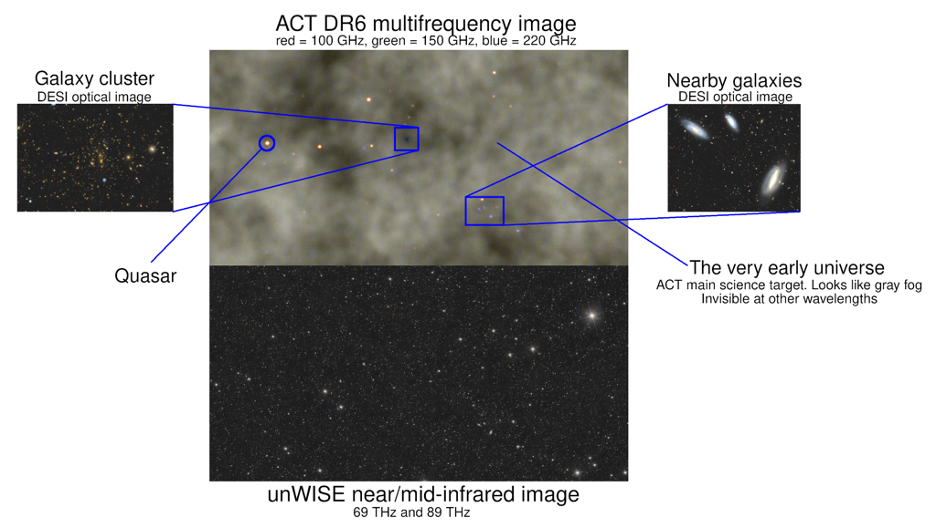This episode of Picturing Knowledge is best experienced in video format.
In Episode 02, Ethan and Kevin speak to Dr. Sigurd Næss (University of Oslo) about how contemporary cosmology–a sub-discipline of astrophysics–studies and understands the Cosmic Microwave Background (CMB): the radiation that holds the keys to understanding the origins and the fate of our universe.
Critical to the study of the CMB are images acquired using millimeter telescopes. Unlike optical telescopes that scan small portions of the sky and collect visible wavelengths of light, millimeter telescopes scan large portions of the sky with detectors sensitive to the much longer wavelengths of light emitted by the CMB. Supercomputers reconstruct the massive datasets into maps of the CMB, revealing the statistical distribution of CMB radiation throughout the universe, and giving cosmologists the clues they need to understand how our universe began and evolved.
How can you take a picture of the universe? What do cosmologists see when looking at maps of the universe? How are cosmologists trained to interact with and use images of the CMB to understand the earliest moments of our universe? In this episode, Dr. Næss answers these questions and gives a guided tour of an interactive mapping tool he created so that anyone can navigate through the CMB and the earliest eras of our universe. Think Google Maps, but on the scale of the universe!
 Sigurd Næss, Atacama Cosmology Telescope (ACT) DR6 multifrequency image, 2022. (Center, top)
Sigurd Næss, Atacama Cosmology Telescope (ACT) DR6 multifrequency image, 2022. (Center, top)
The Cosmic Microwave Background (CMB) appears as a gray “fog”, showing the universe ~380,000 years after the Big Bang. The distribution of the CMB throughout the universe tells cosmologists about the conditions of the early universe. However, the lack of transparency in this image prevents us from seeing farther back in time. (Center, bottom) The CMB is invisible at optical and infrared wavelengths, where galaxies are easily resolved. (Left) The ACT telescope detects less radiation from the CMB when blocked by a galaxy cluster: these appear as dark spots in the CMB due to the Sunyaev Zel’dovich effect (hear more at 27:30).
Due to the interactive nature of Dr. Næss’ CMB map, this episode of Picturing Knowledge is best experienced by viewing the video. A prior version of Dr. Næss’ interactive map of the CMB can be found here. We will update this page when the version discussed in this episode becomes publicly available.
Picturing Knowledge is produced by Kevin Hong and Ethan Perets and supported by the Order of Multitudes Mellon-Sawyer Seminar at Yale University. This episode features original music by Michael Healey. This episode was edited for clarity and length.
Stay tuned for future episodes, where Kevin and Ethan speak with leading experts about how pictures shape our knowledge of the world.